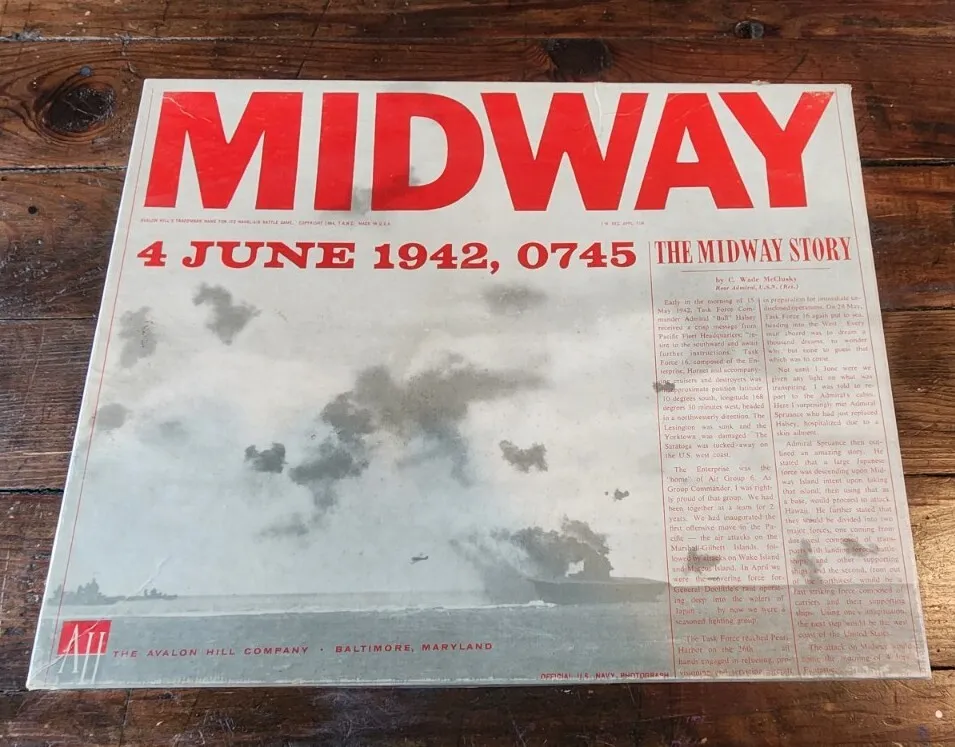Midway (1964)
Midway (1964 game)
Midway is a board wargame published by Avalon Hill in 1964 that simulates the Battle of Midway during World War II. The game was designed by Lindsley Schutz and Larry Pinsky, with technical consultation from C. Wade McCluskey, a U.S. Navy Rear Admiral who had been air group commander on the USS Enterprise during the Battle of Midway. The game was designed with a double-blind hidden movement and search system, which was appropriate for a battle where much depended on searching for the opponent.
Why is Midway (1964 game) Popular?
Midway is significant because it was one of the first wargames to use a double-blind system, which added an element of realism to the game. The game was also designed with input from a real-life military commander who had participated in the Battle of Midway, which added to its authenticity. Midway was popular enough to remain part of Avalon Hill’s line of games through the 1980s, and a revised “Smithsonian” edition of the board game was released in 1991 to coincide with the 50th anniversary of the Attack on Pearl Harbor.
Game Components of Midway
How To Setup Midway
To set up Midway, each player starts by placing their fleet on their respective side of the search board, hidden from the opponent by a divider screen. The American player sets up within the blue margins, while the Japanese player sets up along the red margins. The game begins at 0500 on June 4, 1942, and each turn represents 2 hours of game time.
Gameplay Mechanics and Game Objective
Player Experience
Playing Midway involves a mix of strategy, planning, and intuition. The game’s double-blind mechanism adds a layer of realism and surprise, as players must use search planes to locate enemy ships without direct visual confirmation. The game requires players to manage their fleets carefully, balance search and battle efforts, and adapt to the dynamic battlefield.
Pros
Cons
Personal Thoughts on Midway
Midway is ideal for those interested in naval history and strategic warfare. It’s a great introduction to wargaming for new players due to its simplicity and gradual complexity. However, it may not be the best fit for casual gamers or those looking for quick, light gameplay. For collectors and enthusiasts of historical board games, Midway is a gem that offers a unique and immersive gaming experience.
We are supported by our audience. When you purchase through links on our site, we may earn an affiliate commission, at no extra cost for you. Learn more.

